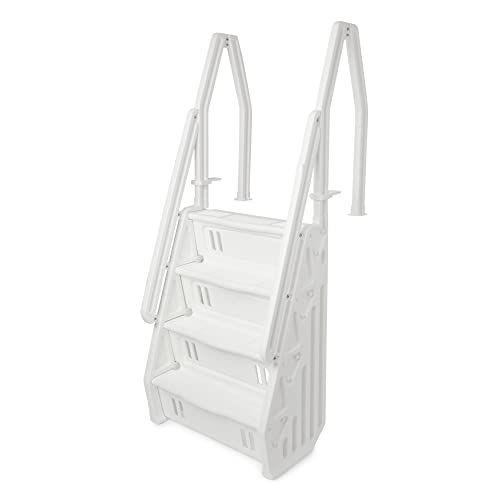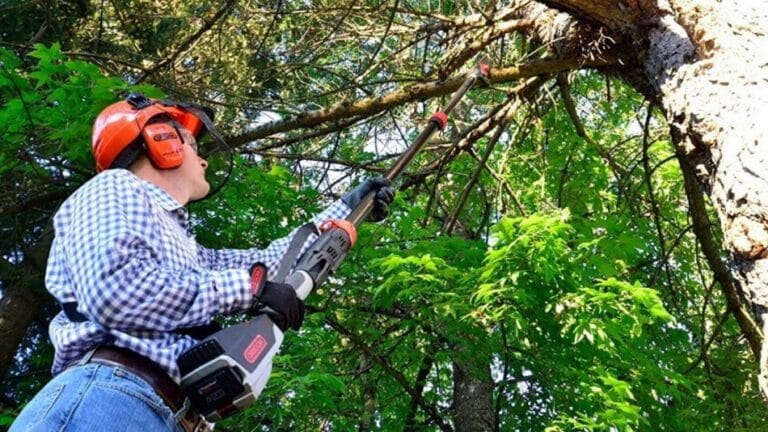How To Kill a Tree – Awesome 3 Ways to Kill Tree Roots

Who doesn’t know that trees are the best of friends out there for us? We can’t imagine our life without trees. They have many different positive impacts on our life. Killing trees or afforestation means destroying the earth itself. But sometimes, cutting down or killing a tree is a necessity.
Many a time, we find that trees can block light over different constructions and so on. Let us assume that you are in need to kill a tree. Now, you must be wondering how to kill a tree. In this post, we have described how you can kill a tree.
Before going into killing trees, let us know first why you should kill a tree.
Why and when should you kill a tree?
The removal of trees is a topic that many people are unsure about. Cutting down trees has long been thought to hurt the local climate. But this has not always been the case. You may need to kill trees for these legit reasons:
1. Helps with forest restoration.
Patterns of life and death are important in the woods. These cycles used to be carried out with ferocious fires, but now we prevent fire from pulling down more mature trees.
Nonetheless, one motive for the axing of old trees is to make way for new development.
2. Assists in the Promotion of Environmental Diversity
A sound woodland is a different kind of backwoods. When different species of trees and critters live in the same area, they can thrive.
Other plant species, such as blueberries, mushrooms, and leafy vegetables, require more variety in woodlands to grow.
3. Reduces the risk of trees falling.
Occasionally, removing a tree is necessary for your safety. This could be true for a single tree on your property or a tract of rural terrain. Because a dead tree’s structure is compromised, it won’t take long to be blown over.
4. Provides Renewable Energy
The climate is harmed by removing large wraps from trees with no intention of replacing them.
Cutting trees and replacing them while taking care not to remove territory for surrounding organisms altogether provides an astonishingly limitless resource for all of our assembly needs.
Wood is unquestionably more practical than other less refined materials that we encounter daily.
5. Prevents the spread of disease and infestation
Trees can withstand a variety of diseases and pervasions that are untreatable. The risk of a widespread invasion on your property and in your area is reduced if you evacuate quickly.
If you suspect a tree is infected or invading your property, it’s best to have it removed before it causes more harm to your other trees and the rest of your property.
How can you kill a tree?
Cutting a Tree Down
If you’re removing a very large tree or are uncomfortable using a chopping tool, you can hire someone to do it for you. In any event, many people essentially cut down their trees.
You’ll need to crush the stump to the ground once the tree has been chopped to a stump.
Unfortunately, chopping and beating won’t be enough to destroy your tree. Occasionally, trees will continue to grow from the stump. If this happens, you’ll have to go through the process of looking for fresh fledglings and cutting them down as soon as they appear.
Cutting the fledglings deprives the roots of the energy they require to continue growing.
If granulating the stump or slicing sprouts isn’t enough to kill your tree, you’ll have to burrow down and carefully remove the roots from the earth.
The well-known buckthorn shrubbery/tree is an example of an animal group that can be eliminated simply by obliterating the roots.
By removal of bark
Completely removing the bark surrounding the tree’s trunk’s boundaries will effectively starve the tree to death. This method, known as “supporting,” is frequently effective, but it is far from safe.
To get the most outstanding results, remove all layers of bark in a circle around the tree with an axe or hatchet, cutting about 1.5 inches deep.
To destroy a small tree, the support should be roughly 2 inches broad, and for a large tree, it should be up to 8 inches wide. 1 and 2
Killing a Tree in a Man-Made Process
Herbicides can destroy trees while also being good for the environment if used correctly. Herbicide’s application to a specific area of the tree is the least harmful to the ecosystem alternatives.
However, there are times when a herbicidal shower is the only reasonable option. There are five major types of herbicides, only a few approved for use in the home or on crops.
Glyphosate and imazapyr damage plants by interfering with the combination of plant proteins, whereas triclopyr amine and triclopyr ester are development controllers. Aminopyralid is primarily effective on vegetables such as kudzu and may not be appropriate for your needs. Here are six possible techniques to destroy a tree artificially:
• Cut Surface Treatments:
This treatment entails cutting a channel through the bark to allow herbicide to enter the plant’s vascular structure. Begin by making a series of descending cuts with a hatchet or axe around the tree’s circuit, leaving the lace (cut section of bark) attached to the tree.
Apply the herbicide to the cuts as soon as possible. When the sap is migrating away from the injury, don’t apply in the spring since it will prevent assimilation.
• Injection Treatments:
When cutting a tree, use specific tree infusion hardware to inject a specific amount of herbicide into the tree. When infusions are given every 2 to 6 crawls around the tree, the medicines are still viable.
3 Treat trees with a width of 1.5 inches or more at chest stature for the most outstanding results. Because infusion isn’t about gear, it’s usually handled by a tree removal firm.
• Stump Treatments:
After chopping down a tree, you can prevent regrowth by treating the newly sliced surface with herbicide as soon as possible. On more giant trees, only treat the stump’s outer 2 to 3 inches, including the cambium layer (the inside heartwood of the tree is now dead).
Treat the entire cut surface of trees with a diameter of 3 inches or less. 3
• Basal Bark Treatments:
From late winter to mid-fall, apply herbicide to the lower 12 to 18 inches of the tree trunk (on the bark).
• Foliar Treatments:
Foliar splashing is a common pesticide application approach for plants up to 15 feet tall. Apply herbicides from late spring to late September, depending on herbicide choice.
When the weather is hot, and the trees are under a lot of water, medicines are less feasible.
• Soil Treatments:
After sufficient precipitation or overhead dampness, certain soil medications put evenly to the dirt surface might travel into the root zone of specified plants.
Banding (also known as binding or streaking) involves applying a concentrated solution to the dirt in a line or band every 2 to 4 feet. You can use this method to kill a large number of trees in a short amount of time.
Conclusion
You might have been surprised by the heading, which speaks of killing a tree. But sometimes, we need to do that for the betterment of our living.
We back you to follow the points mentioned above to know how to kill a tree and why you need to do so.






